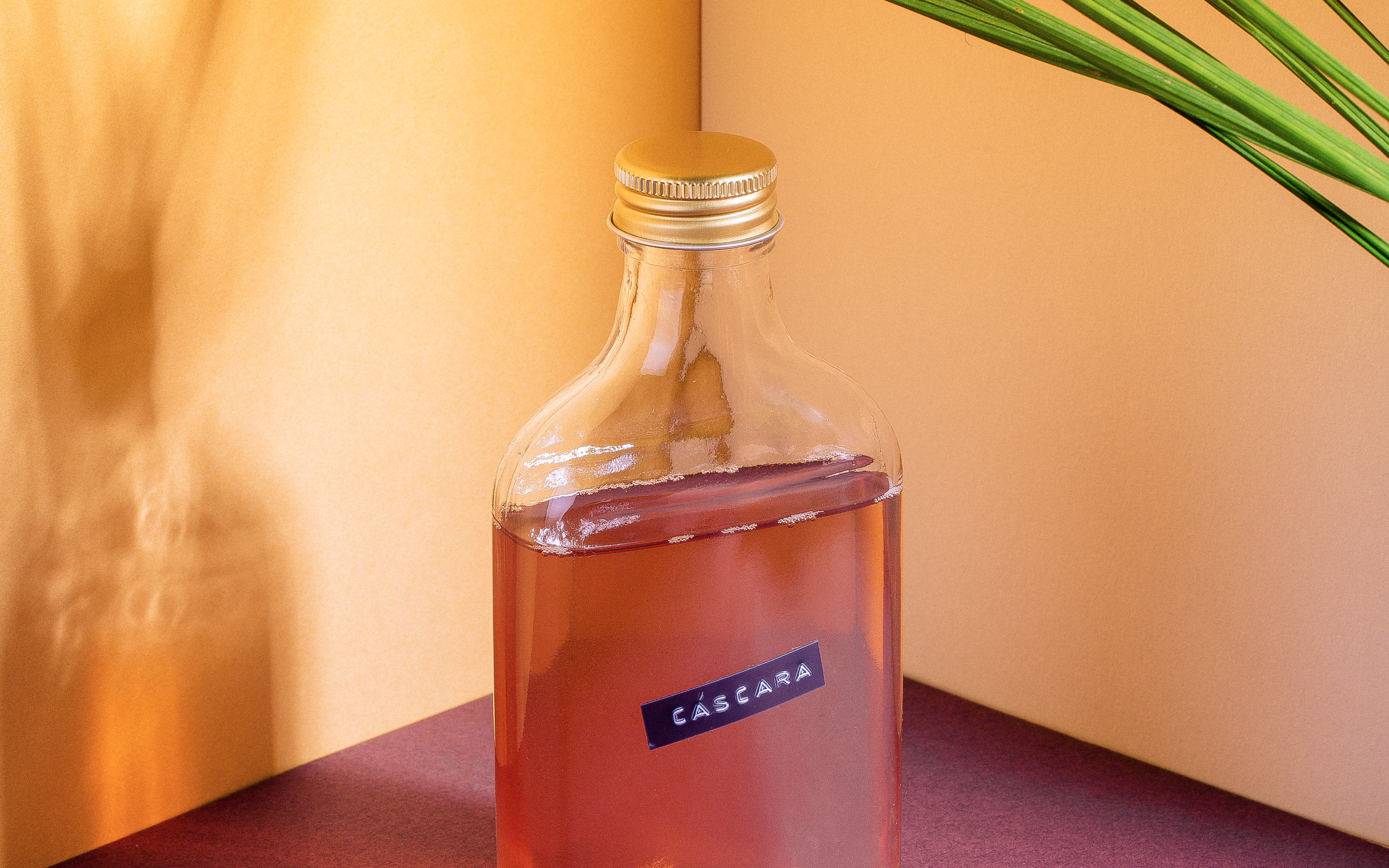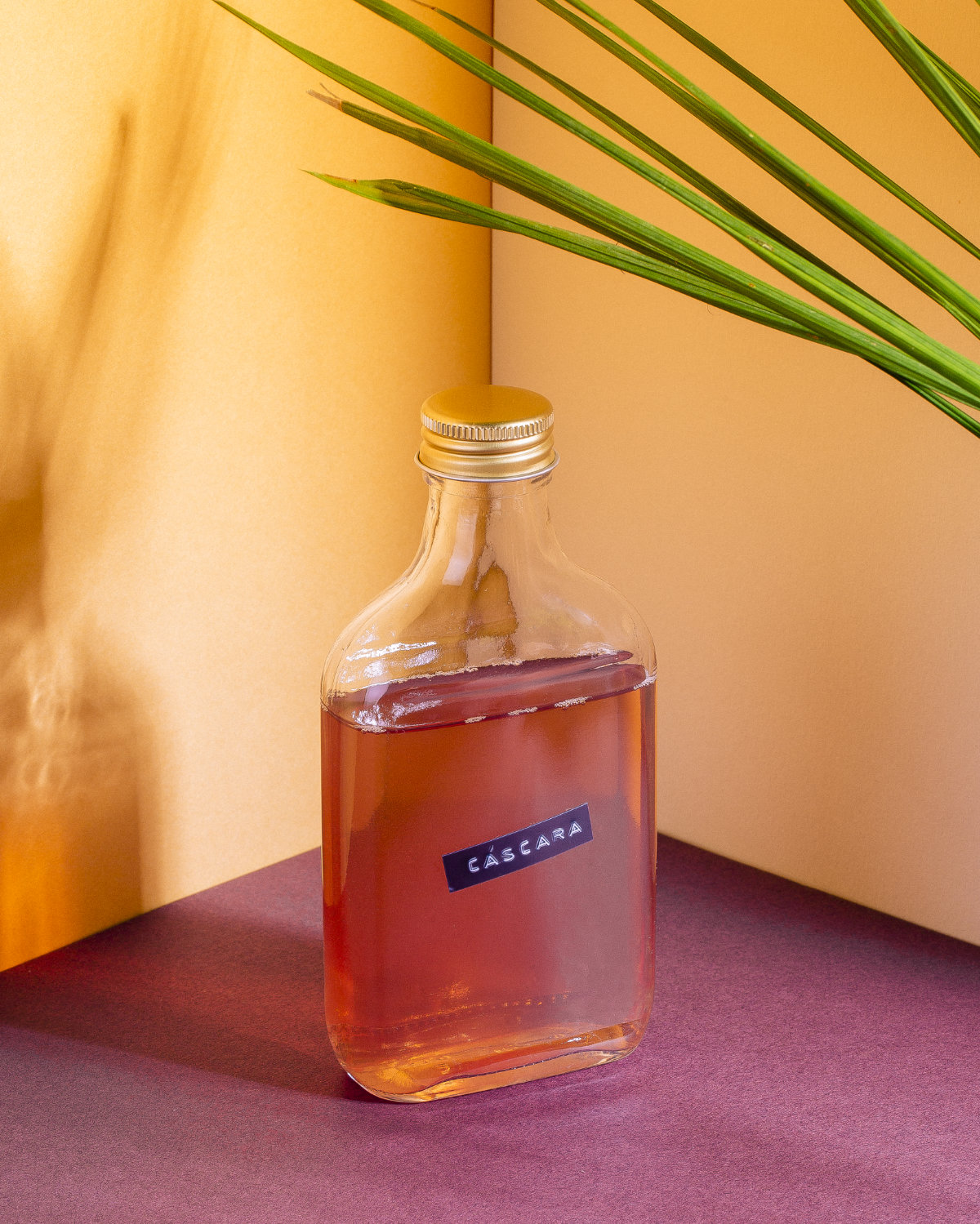The New Gastronome
CASCARA
COLD INFUSION
by Gabriela Montañez
by Gabriela Montañez

Are you a coffee lover who wants to keep an eye on caffeine consumption? Or, do you want to spice up your studying hours with a new drink? Give this recipe a try! Who knows, maybe its sweetness, fruity taste and notes of cherry, red currant, and even tobacco will boost your creativity.
The name comes from the Spanish word cáscara for “husk” or “peel”, as it’s an infusion made from the skin of coffee cherries. However, cascara is neither coffee (even though it comes from the genus coffea) nor tea. In fact, the most appropriate way to categorize it would be as a “fruit tisane” – after all, it is made from fruit peel. It can be prepared warm or cold, and you can even add extra flavours: how does a pinch of ginger or cinnamon sound to you?

Before getting to the recipe, let’s learn a bit more about this product! The cherry cáscara is a by-product of the coffee-making process. Normally, after the coffee is harvested, the skins are removed from the cherries and dried in the sun. They often end up discarded or used for compost, but lately, specialty coffee shops have started using them for infusions. What seems like a new trend, has actually been done for centuries by coffee farmers in Ethiopia and Yemen, who prepare the drink with spices like ginger, nutmeg, or cinnamon. It’s known as hashara in Ethiopia and qisher in Yemen.
Here is what you will need to bring the perfect cascara infusion to work with you:
A. D V. E. R. T. I. S. I. N. G
NOTE: The caffeine content of these infusions is low, and it varies according to the ratio of cascara to water. Some laboratory studies carried out in Germany showed that even in the strongest, longest brew, the caffeine content of cascara was only 111,4 mg/L, compared to coffee’s broad range of about 400-800 mg/L.
The opinions expressed in the articles of this magazine do not necessarily represent the views of
The New Gastronome and The University of Gastronomic Sciences of Pollenzo.
Photos ©Aarón Gómez Figueroa